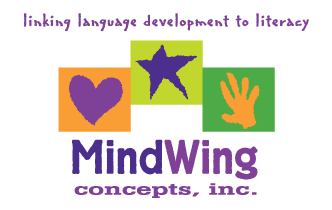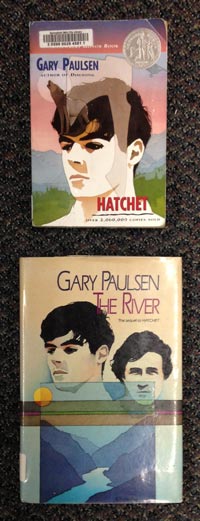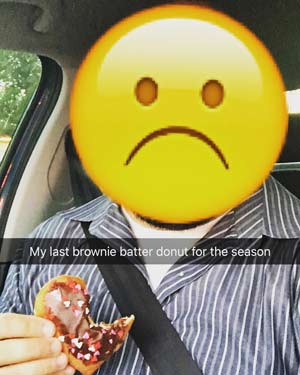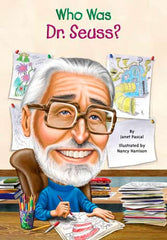Menu
-
- Home
-
About Us
-
The Approach
-
Linking Language & Literacy
-
MindWing Learning
-
Learning Resources
-
SHOP
-
Blog
-
- About MindWing
- Our People
- Contact Us
- Your Account
- Login
-
Spain (EUR €)


Additional Activities for “The River”
April 12, 2016
 For those of you who own a copy of the ThemeMaker Teachers' Manual, you know that one of the novels featured is The River by Gary Paulsen. This novel is a sequel to Hatchet. The River is an excellent book for exploring character development. I recently came across my folder for The River and thought I would share a few additional activities with you before putting it away. One of our sixth grade teachers, Donna Mulligan and I collaborated to present this reading adventure to our students. Six students in her class were on educational plans for reading, two for decoding and comprehension, the others for comprehension skills only. Since all the students had knowledge of and had used the SGM® for several years, it provided the needed scaffolding to support students within the classroom. This also made it easier for flexible groupings of students as the SGM® was so familiar to all and a common language was already established among all participants...
For those of you who own a copy of the ThemeMaker Teachers' Manual, you know that one of the novels featured is The River by Gary Paulsen. This novel is a sequel to Hatchet. The River is an excellent book for exploring character development. I recently came across my folder for The River and thought I would share a few additional activities with you before putting it away. One of our sixth grade teachers, Donna Mulligan and I collaborated to present this reading adventure to our students. Six students in her class were on educational plans for reading, two for decoding and comprehension, the others for comprehension skills only. Since all the students had knowledge of and had used the SGM® for several years, it provided the needed scaffolding to support students within the classroom. This also made it easier for flexible groupings of students as the SGM® was so familiar to all and a common language was already established among all participants...

Autism Awareness & SGM®: 31 FREE RESOURCES
April 05, 2016 1 Comment
In recognition of Autism Awareness Month, we would like to share with you 31 Blog Posts, Free Lessons, Webinars and Videos that focus on social communication which can be used to help children along the Autism Spectrum. The themes in these blogs/lessons/videos/webinars are perspective-taking, social problem solving, critical  thinking, social emotions, theory of mind, story-telling and more! In addition to these FREE resources, for the month of April our Autism/Social Communication Collection is $50 OFF! The sale price is $99.95 for the whole collection (normally $149.95)! We want to give you the chance to use this kit of materials with the population of students who can benefit from it most...
thinking, social emotions, theory of mind, story-telling and more! In addition to these FREE resources, for the month of April our Autism/Social Communication Collection is $50 OFF! The sale price is $99.95 for the whole collection (normally $149.95)! We want to give you the chance to use this kit of materials with the population of students who can benefit from it most...

Another Classic: Dr. Seuss’ The Sneetches
March 21, 2016
 A previous blog (“Read Across America Day and Dr. Seuss Lesson,” 2/29/16) focused on the biography about Dr. Seuss. One of his selections mentioned was The Sneetches, published in 1961. Written during the 1960s during the civil rights struggle, this book demonstrates conflict between star-bellied Sneetches and those Sneetches who did not have stars. In a biography, it was stated that Ted Geisel showed through this story how he thought it was silly for people “to hate one another because they looked different” (p. 81, Who Was Dr. Seuss? by Janet Pascal). Below find The Sneetches outlined using five of the seven SGM Developmental Stages...
A previous blog (“Read Across America Day and Dr. Seuss Lesson,” 2/29/16) focused on the biography about Dr. Seuss. One of his selections mentioned was The Sneetches, published in 1961. Written during the 1960s during the civil rights struggle, this book demonstrates conflict between star-bellied Sneetches and those Sneetches who did not have stars. In a biography, it was stated that Ted Geisel showed through this story how he thought it was silly for people “to hate one another because they looked different” (p. 81, Who Was Dr. Seuss? by Janet Pascal). Below find The Sneetches outlined using five of the seven SGM Developmental Stages...

Understanding Novels / Chapter Books with SGM — Part 6
March 10, 2016
 This final section of analysis of The Big Wave by Pearl Buck begins with personification of the sea and extends the overall themes of friendship, resilience, overcoming obstacles and gratitude leading to new beginnings. The Critical Thinking Triangle® and the Complete Episode maps of the Story Grammar Marker® assist students in qualitative analysis of the plot to form opinions and apply the themes to their own lives. On pages 20 and 21 Jiya must obey and make a decision. Use two Critical Thinking Triangles to map these...
This final section of analysis of The Big Wave by Pearl Buck begins with personification of the sea and extends the overall themes of friendship, resilience, overcoming obstacles and gratitude leading to new beginnings. The Critical Thinking Triangle® and the Complete Episode maps of the Story Grammar Marker® assist students in qualitative analysis of the plot to form opinions and apply the themes to their own lives. On pages 20 and 21 Jiya must obey and make a decision. Use two Critical Thinking Triangles to map these...

Tech Tuesday: Using Emoji in Narrative Analysis
March 08, 2016

A friend’s Emoji creation in the SnapChat app.
In selecting topics for Technology Tuesday, I find it helpful to “piggy back” on my own clinical work, of course, but also on topics that have recently appeared on this blog. Recently, Sheila Moreau wrote in a MindWing blog about the power of emoji for understanding narrative events, identifying emotions, and expressing empathy, particularly in relation to Facebook’s recent incorporation of a range of reactions available to use in response to others’ posts. While emoji are a narrative phenomenon changing our (and teens’) reaction to social media (note that they have always been present in the “much-cooler” Snapchat), there are also ways to use them as visual tools out of the context of social media, a place where clinicians may not “want to go” with students...

Read Across America Day & Dr. Seuss Lesson!
February 29, 2016
 As always, I began writing my lesson by gathering my focus book and Story Grammar Marker® Mini-Posters. Since the children enjoyed our recent Rosa Parks read aloud Who was Rosa Parks? written by Yona Zeldis McDonough, this week I chose Who Was Dr. Seuss? written by Janet B. Pascal from the same series. I planned the lesson to coincide with Read Across America Day on March 2, which is Dr. Seuss’ birthday. The lexile measure of this book is 820L. The following lesson suggestions were designed for grades 3 and 4. Lessons may be modified to meet your student’s needs. Many people ask how I go about creating lessons to use the SGM®. Really, it is the opposite thinking, as I always have asked myself: How can the SGM® be used to enhance the lessons I already do and target skills that I am trying to teach?...
As always, I began writing my lesson by gathering my focus book and Story Grammar Marker® Mini-Posters. Since the children enjoyed our recent Rosa Parks read aloud Who was Rosa Parks? written by Yona Zeldis McDonough, this week I chose Who Was Dr. Seuss? written by Janet B. Pascal from the same series. I planned the lesson to coincide with Read Across America Day on March 2, which is Dr. Seuss’ birthday. The lexile measure of this book is 820L. The following lesson suggestions were designed for grades 3 and 4. Lessons may be modified to meet your student’s needs. Many people ask how I go about creating lessons to use the SGM®. Really, it is the opposite thinking, as I always have asked myself: How can the SGM® be used to enhance the lessons I already do and target skills that I am trying to teach?...
